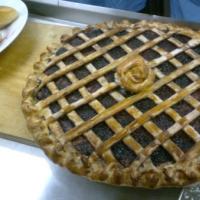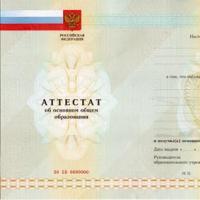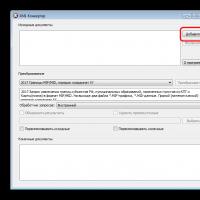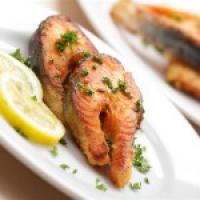Church of the Nativity of Christ and St. Nicholas the Wonderworker in Florence. Churches of Florence Orthodox Church in Florence
I have the honor as rector to present to you this wonderful first Russian Orthodox church on Italian territory. Despite its youth - our temple was consecrated in November 1903 - it united in its historical existence the memories dear to the heart of the events of the last centuries of Russian history. Russian, of course, not in an ethnic sense, but in a national sense, and maybe even more likely, a civilizational one.
Indeed, the banners located on both sides of the entrance to the upper church were present at the Easter service of 1814 at the place de la Concorde in Paris, the first Easter celebrated in the Marching Church of Alexander the First, after the capture of the capital of France by Russian troops, when the entire army present here in the square, she took communion. By the way, the dedication of the upper church of our church to the Nativity of Christ originates from the camp church of Alexander the First.
In the vestibule, immediately at the entrance, on the left, on a small makeshift belfry hangs a bell from the cruiser Almaz. This cruiser was a participant in the Tsushima Battle of the Russian-Japanese War of 1905, the only cruiser that survived that battle and managed, despite numerous damages, to reach Vladivostok under its own power. After repairs, she served as an Imperial yacht, and in 1921 she headed one of the groups of ships carrying out the exodus of Russian emigration from Crimea.
The shrine of the temple is the cross-reliquary of Metropolitan Philaret Romanov (later the Patriarch of Moscow and All Rus'), which became a shrine of the Royal House with the election of the sixteen-year-old boy Mikhail Romanov to the kingdom. The Romanovs prayed before him until 1698, when Peter the Great, wanting to marry Anna Mons, imprisoned his first wife Evdokia, née Lopukhina, in the Suzdal monastery, who took the cross with her. He never returned to the Romanov family, but was passed down from generation to generation in the Lopukhin family. The last Lopukhina from this branch died in Florence in 1922 and since then the reliquary cross has been in the Altar of the temple.
The iconostasis of the upper church, donated by the last Russian Emperor Nicholas II, the holy martyr tsar, is made of white Carrara marble and yellow Verona marble and contains, as additional icons of saints, heavenly patrons of the last Royal family and the monogram of the Sovereign.
The Lower Church of St. Nicholas the Wonderworker inherits the dedication of the House Church of one of the branches of the famous Ural family of mining owners, the Demidovs, who settled in Florence in 1822 and already had their own church from the early 50s. Due to the forced sale of the San Donato estate in 1880, all the decoration of the House Church - the iconostasis, icons, church vessels and utensils, liturgical books - everything was preserved for the already planned Orthodox church in Florence, so when visiting the lower church, you have a truly unique the opportunity to see in what conditions our eminent ancestors prayed.
Unfortunately, at present the appearance of the temple building is in critical condition. The local soft stone pietra serena, which has a major disadvantage of absorbing water over time, and therefore losing its original shape, has passed all possible periods of normal functioning and, without external intervention, is destroyed at high speed. A roof leak in the Altar added to the bleak picture of the deplorable state of the church building. You can get acquainted with the progress of work and the necessary means for this in the section of the site dedicated to restoration, which is carried out under the guidance of our engineer, who is also the author of the corresponding section of the site. His high professionalism gives us confidence in the successful completion of the work, subject to the availability of funds, in the upcoming 2013 anniversary year, the year of celebration of the 400th anniversary of the House of Romanov.
So, I welcome you to our website and wish that your visit to it in virtual space will continue for you in real space - the space of the city of Florence, the true cradle of classical European culture, where on the street of Pope Leo the Tenth, who wrote, in his time, two letters to Tsar Ivan the Terrible, there is a five-domed Russian temple.
- a unique ancient city in Italy, preserving many ancient Christian shrines. Among them is the head of St. John Chrysostom, as well as miraculous icons of the Mother of God. And, of course, Florence will not be itself without ancient cathedrals and churches, frescoes and sculptures.
Florence has hospitably welcomed Russian travelers and pilgrims for many centuries. In the 19th century there was already a Russian colony here. Many aristocrats (Musins-Pushkins, Buturlins, Kochubeis, Demidovs, etc.) lived in this city for a long time, and writers, artists, composers (Dostoevsky, Tchaikovsky) also stayed.
At the beginning of the 20th century, a beautiful five-domed building was built in Florence at the expense of the Russian community. Orthodox church in honor of the Nativity of Christ and St. Nicholas the Wonderworker.
This is where we started our day in Florence.

This is the first Russian Orthodox church in Italy. It was consecrated in November 1903. thanks to the efforts of Father Vladimir Levitsky and donations from Russian parishioners, in particular the Demidov family, and Emperor Nicholas II. It is a unique example of creative cooperation between Russian and Italian masters.
We were lucky enough to meet with the rector, Father Georgy Blatinsky.

The iconostasis of the upper church, donated by the last Russian Emperor Nicholas II, the holy martyr tsar, is made of white Carrara marble and yellow Verona marble and contains, as additional icons of saints, heavenly patrons of the last Royal family and the monogram of the Sovereign.

The shrine of the temple is the cross-reliquary of Metropolitan Philaret Romanov (later the Patriarch of Moscow and All Rus'), which became a shrine of the Royal House with the election of the sixteen-year-old boy Mikhail Romanov to the kingdom. The Romanovs prayed before him until 1698, when Peter the Great, wanting to marry Anna Mons, imprisoned his first wife Evdokia, née Lopukhina, in the Suzdal monastery, who took the cross with her. He never returned to the Romanov family, but was passed down from generation to generation in the Lopukhin family. The last Lopukhina from this branch died in Florence in 1922 and since then the reliquary cross has been in the Altar of the temple.

Cross - reliquary
After serving a short prayer service and praying, we set off to explore Florence. It was founded in 59 BC personally by Julius Caesar.
Cathedral of Santa Maria del Fiore- Cathedral in Florence, the most famous architectural structure of the Florentine Quattrocento. The relics of St. rest here. John Chrysostom and St. . ap. Andrew the First-Called. The cathedral contains pieces of the relics of many martyrs of Christianity. Including pieces of the relics of Mary Magdalene, small particles of the Life-Giving Tree of the Lord. Under the main altar rest the relics of St. Zenobius, the first bishop of the city of Florence.



This cathedral also contains icons by the Italian icon painter Giotto di Bondone.

We visited , located on the site of the 8th century convent of the Archangel Michael in the Garden. In 1240, a market arose on the site of the monastery, where grain was traded on the ground floor in an open loggia, and there was a granary on the second floor.
In the 14th century the market was moved to another location. A church was built on the ground floor, which became very rich during the plague epidemic of 1348; the second floor continued to be used as a granary until 1569.

And then we just walked around this ancient city












Florence is a unique city, named after the capital of the Renaissance. Many churches and cathedrals preserve paintings by the most famous artists of this era. “A miracle of human skill in the open air,” that’s what everyone who comes to this city calls it.
The historic city center is decorated with an architectural gem: the Cathedral of Our Lady of Santa Maria del Fiori. The dome of the cathedral, designed by Brunelleschi, is a symbol of the city.
Open: Mon.-Sat. 10.00-17.00, Sun. 13.00-17.00
Cathedral of Our Lady of Fiori - Santa Maria del Fiori
The Cathedral of Our Lady took 140 years to build and such famous architects as Giotto, Andrea Pisano and Brunelleschi contributed their work to it. In 1436, the cathedral was consecrated by Pope Eugene IV and divine services began there. The cathedral was erected on the site of the temple of St. Reparta, a Palestinian martyr of the 3rd century. The cathedral contains the remains of this church.
Under the main altar of the cathedral, in a bronze urn, rest relics of Saint Zenobius(San Zanobi) - the first bishop (417-429) of the city of Florence.
An honest head is preserved in the cathedral Saint John Chrysostom. Next to the cathedral there is a magnificent octagonal baptistery (baptistery).
Baptistery (baptistery) of the Holy Prophet, Forerunner and Baptist of the Lord John
In ancient times, on the site of the baptistery stood a pagan temple to Mars. Christians adapted it into a church where they performed the sacrament of baptism. Later the building was rebuilt. The Baptistery is dedicated to John the Baptist, the spiritual patron of Florence.
Borgo di San Lorenzo. Open: 07.00-12.00, 15.30-18.30

Church of St. Lawrence - Chiesa di San Lorenzo
This church is considered the oldest in the city. It was consecrated by Saint Ambrose of Milan in 393. Almost all the rulers of Florence, from Cosimo the Elder to the Dukes of Lorraine, were buried in this temple.
Viale Galileo Galilei. Summer: 08.00-12.00, 14.00-18.00

Church of the Holy Martyr Menas on the mountain - Basilica di San Miniato al Monte
The temple is the best example of Romanesque architecture in Tuscany. On the site of this church in the 4th century. there was a chapel. In 1018, the bishop of the city decided to build a church here dedicated to the locally revered martyr Mina. The altar of the church contains the relics of the holy martyr Mina, who is considered the first Florentine saint. Born rich, Mina led a dissolute life, but then, having been baptized, he retired to a cave to exercise in prayer. Under the emperor Decius, he was martyred through beheading.
This city is considered the birthplace of the Renaissance, which gave the planet priceless masterpieces of architecture, painting, numerous poets, writers, and musicians. The atmosphere of the city's past centuries is combined with the life of modern buildings, streets, and squares. Numerous sights, churches and temples of Florence, with an inexplicable magical force, attract the eye, forcing one to stop and go inside.
A nice bonus only for our readers - a discount coupon when paying for tours on the website until June 30:
- AF500guruturizma - promotional code for 500 rubles for tours from 40,000 rubles
- AF2000TGuruturizma - promotional code for 2,000 rubles. for tours to Tunisia from 100,000 rubles.
And you will find many more profitable offers from all tour operators on the website. Compare, choose and book tours at the best prices!
Not far from the main bus station of the city rises a five-domed church, well known for its appearance from churches in Russia. The principles of Moscow-Yaroslavl architecture of the 17th century were reflected in the architecture of the temple of Italy not by chance. Its history begins with the acquisition of a plot of land near the Mugnone River by the Russian Orthodox Church. Construction according to the Preobrazhensky project began in July 1899. The first Orthodox church in Italy has a two-story structure, a high porch, a central part decorated with kokoshniks, and traditional five domes.
The lower part of the church was erected in honor of St. Nicholas the Wonderworker (consecrated in 1902). There is a wooden iconostasis and a large number of interesting icons created by specialists from Peshekhonov’s workshop. Many elements of the decoration of the lower floor came from the collection of Prince P. Demidov. The upper part was built in honor of the Nativity of Christ (consecrated in 1903). There is an interesting iconostasis here, made of the famous white marble. The wall paintings are made in the Russian Art Nouveau style. The church houses rare relics, for example, a bell taken from the cruiser Admaz, which took part in the Battle of Tsushima. Cross of Metropolitan, Patriarch of Moscow, All Rus' Filaret (Romanov).
The church is located at Via Leone X, 12. You can get to it by bus routes 2.8.13. 14.20.28.
Church of Santa Maria Novella

The architectural form of the building, decorated with a geometric pattern of polished marble tiles, resembles an openwork box. You will definitely want to open it and look inside when you first look at the ancient building. Its initial role was formed by the powerful, wealthy order of the Dominicans, who were building another monastery and church for themselves. It was erected on the site of the ancient chapel of Santa Maria delle - Vigne. Construction ended in 1420. The interesting façade of the church was commissioned by the Ruccellai family. Their symbol in the form of a boat with inflated sails adorns the portal of the building.
The original element of the church is considered to be pylons (in the form of columns on which there are lancet windows). The interior of the church was changed several times and new elements were added. Now it is formed by works of art of the IVX-XVI centuries. Among them you can see the monument to Blessed Villana, the tombs of Bishop Fiesole, Philip Strozzi, and the bust of St. Antonin. An altar with an interesting bronze crucifix was built in the Maggiore Chapel. In the Strotia Chapel you can see the famous frescoes depicting the Last Judgment and other oldest frescoes in Florence.
The church is located at Piazza Santa Maria Novella and receives visitors from 9 a.m. to 7 p.m. The entrance ticket price is 5 €.
Cathedral of Santa Maria del Fiore

In “Beautiful”, “Blooming” Florence (the capital of Tuscany), during its heyday and population growth, there arose a need to erect a cathedral demonstrating its greatness. The Duomo, built on the site of the ancient Cathedral of Santa Reparata, which existed for 9 centuries, became such a temple in 1434. In those days, it could accommodate all the residents of the city. Now, the church's dome, rising above the bright tiled roofs of the city's neighborhoods, points the way to one of Florence's main attractions.
Having overcome 414 steps, you can appreciate the beauty of the surroundings from the top of the tower, and take another staircase to get around the majestic dome. During its creation, the ingenious engineering solutions of the architect Brunelleschi were used, which allowed the Temple to stand for many centuries. It took almost 14 years to build the huge dome. Its height, together with the small temple on top (which acts as a lantern), is about 107 m. This amazing architectural element has reliably supported the dome structure for centuries. As a result, the world is forever captivated by the appearance, size, and beauty of the decoration of the Cathedral of Santa Maria del Fiore. The dimensions of the cathedral (153 m long, 90 m wide) allowed it to take fourth place in the world.

The Cathedral is located in the city center. It is impossible not to notice it. Any bus route will take those interested to Cathedral Square. The cathedral is open to the public from 10 am to 5 pm (Monday, Tuesday, Wednesday, Friday). On Sunday, visiting hours start at 13.30 to 16.45 hours. The museum is open all days of the week (except Sunday) from 9 a.m. to 7:30 p.m. There is no need to pay to enter the church. Climbing to the dome and visiting the museum will cost 6 €. You can view the excavations of the ancient Cathedral of Santa Reparata for 3 €. A comprehensive ticket giving the right to visit the specified places costs 8 €.
All Saints Church

Ognissanti, or the Church of All Saints, on its way to becoming the first basilica of Florence, participated in many historical events, developing with the participation of numerous rulers. The names of famous architects and artists remained in interesting elements of the external and internal interiors of the church. For example, the works of the famous masters of painting Botticelli, Ghirlandaio (Michelangelo’s teacher) still amaze with the beauty of their extraordinary frescoes. These are “The Last Supper”, “Madonna of Mercy”, “Saint Jerome”. "Saint Augustine" by Botticelli, considered a classic work of the Renaissance. By the way, his life is closely connected with this church, in which the grave of the famous master is located.

It is located on the feet of the artist’s beloved Simoneta Vespucci, who was buried here. The same one who was the wife of Amergo Vespucci’s relative, in whose honor America got its name. Her beautiful face was forever frozen in the works of the loving Renaissance artist (Venus, Spring on famous canvases). The history of the appearance of the church is connected with the Vespucci family. It originally belonged to the family. Construction of the new basilica began in 1251 as part of the Humilian monastery complex. Thanks to the strong financial support of the rich people of Florence, the church (Baroque style) quickly accumulated masterpieces of works of art performed by famous masters in different centuries.
The church is located at Borgo Ognissanti, 42, 50123 Firenze. Entrance to the church is free of charge from Monday to Sunday from 7.30 am to 7.45 pm with a break.
Basilica of Santa Croce

The restored Gothic facade of the church, consecrated by Pope Eugene IV in 1442, attracts attention with its architectural elements. Among them, the central nave illuminated by the sun, numerous stained glass windows (some of them are more than 7 centuries old). Through them, the interior of the church is illuminated in different shades. An unusual decorative element in the form of a Star of David is reminiscent of the author of the design of the new façade, the Jew Nicolo Mattas. The Basilica or "Church of the Holy Cross" is shaped like a T-shaped cross. The length of the main nave of the church is 115 m. This is the largest Franciscan church. The church has 16 chapels (chapels), decorated with frescoes by famous masters of the country who lived at different times.

The facade of the church is a real, expensive work of art made from elements of multi-colored marble. The main feature of the church is the numerous tombs belonging to the great people of Italy. Their names are forever inscribed on the tombs containing the ashes that make up the Pantheon of Florence. Galileo, Michelangelo Buanorotti, Dante Alighieri, Niccolo Machiavelli, Gioachinno Rossini, Enrico Fermi and many other great personalities (about 300) rest on a marble bed with the figure of the owner on the sarcophagus.
Each tomb has an arch supported by columns. Along with unique frescoes and sculptures. The paintings of the tomb make up the unsurpassed richness of the church and create an atmosphere of eternal tranquility. The basilica is located at Piazza Santa Croce, 16. It is open to the public every day from 9.30 to 17.30. On holidays and Sundays the church is open from 14:00 to 17:00. Adults pay 8 € to enter the church, children over 11 years of age pay 6 €. There is a family ticket with a price of 8 €.
Basilica of San Lorenzo

A small church, built in honor of Saints Lawrence and Zenobius, stood on this site back in the 4th century. The church served as the Florence Cathedral until the 7th century. Then they moved on to the Cathedral of Santa Maria del Fiori. In the 16th century, the richest family of Italy, the Medici, began to rebuild the church as a family tomb. The creations of great masters in architecture, sculpture, and painting embodied their ideas in the design of the external and internal parts of the new church. Behind the simple, majestic walls of the basilica are hidden interesting masterpieces of their work.

Among them are the Old Sacristy chapel, created by Philip Brunelleschi, and the New Sacristy, which appeared due to the brilliant work of Michelangelo Buanarotti. Historians say that he failed to complete the facade of the basilica in accordance with his plans. The interior of the church is much more beautiful and rich than the exterior. The complex, beautiful pattern of the floor mosaic, the starry sky created on the ceiling, fills the atmosphere of the church with ecclesiastical, magical content. Tombs of family members, sarcophagi, decorated with interesting sculptures, harmoniously complement it. In the church you can see the interesting chapel of the princes and the ancient Laurentian library.
The basilica is located at Piazza di San Lorenzo, 9. The church is open to visitors from Monday to Saturday (from 10.00 to 17.00 hours). The ticket price for entering the church is 4.5 €, the library is 3 €, the Medici Chapel is 8 €. A general ticket can be purchased for 8 €.
Church of Santa Trinita

A small building with a simple facade, like a magic box, hides behind its walls a free museum of medieval masterpieces created by artists Ghirlandaio, Mariotto di Nardo. His famous “Trinity” adorns the main altar of the church. All chapels (chapels) are painted by famous artists. The central part of the church is decorated with a painting dedicated to the birth of Christ, “The Adoration of the Shepherds.” Ghirlandaio's unique creations have always aroused increased interest, increasing their value. This was well understood by the monks of the Vallombrosin order (professing asceticism), which owns the ancient church.
The church was built in 1280. It was repaired and rebuilt many times. In the 16th century, a bas-relief of the Holy Trinity appeared on the facade of the building. Much later, the church decorated the door with images of holy monks, and a cozy courtyard with arcades was formed. The great value of the basilica is its chapels. The church combined a variety of architectural styles while retaining Gothic elements. Now the church is a Catholic basilica. It is considered one of the oldest churches in Florence.
The church is located in the city center, near the Santa Trinita Bridge at Santa Trìnita, Holy Trinity Church.
Church of Santa Maria del Carmine

The small church, erected in honor of the Madonna of the Carmelite Order in 1268, is considered a landmark of ancient Florence. Five towers, a small window and a simple facade of the church hide the unusually beautiful interior of the church. Constant changes introduced Baroque and Rococo elements into the Romanesque-Gothic appearance of the church. Ancient frescoes and marble sculptures of the interior decoration have been preserved in their original form. The church has five tombs (chapels) and monastery rooms. Among them, the Brancacci Chapel is considered unique.
It is decorated with frescoes depicting the life of the Apostle Peter. “Peter’s baptism of neophytes”, “Peter heals the sick with his shadow”, “Miracle with the statir”. The frescoes were created by the famous masters Masaccio and Masolino. Access to the church to explore the chapel has been permitted since 1990. Entrance to the church is free of charge. Inspection of the frescoes of the Brancacci Chapel is possible for a payment of 3 €. The church complex includes the Corsini Chapel, an active Carmelite convent.
The church is located at Piazza del Carmine, 50124 Firenze.
Basilica of Santo Spirito

The Church of the Holy Spirit is a late creation of the famous Filippo Brunelleschi. It was to become an important element of the huge urban planning project of Florence. It was not possible to complete the construction in full accordance with the architect’s bold plans. The construction of the early Renaissance church, as well as the Basilica of San Lorenzo, took place after the death of the great master. On the site of the new church there was a 13th-century monastery (burnt down in 1471). It was considered the intellectual center of Florence. The monastery operated a school, a library, an almshouse, and a canteen for the poor.
Residents of the city dreamed of continuing their good deeds in the new church. The simple, elegant style of the building's architecture amazes with its proportions and color scheme. Inside the church there are famous paintings: “The Crucifixion” by Michelangelo, “Madonna and Child and Saints” by Lippo, and “The Expulsion of the Merchants from the Temple” by Stradano. The architectural complex includes the Kronaki narthex, two cloisters, and the Sangalo sacristy. At the entrance to the temple is the Romano Foundation Museum. It contains the painting “The Last Supper” by Andrea Orcagni.
The church is located at Via Porta Aurea, 48121 Ravenna RA.
Basilica of Saint Miniato al Monte

Nestled on one of the high hills of Florence is an ancient basilica, which has preserved the architectural elements of the best examples of Italian buildings, made in the traditions of the ancient Romanesque style. According to an ancient legend, there was a chapel (cave) in this place where the first martyr of Florence, Miniato (Minas, of Armenian origin and who appeared in Italy in 250), died. Gradually, a monastery was built next to the church, designed by Michelangelo, and transferred to the Benedictine Order. Later it was rebuilt and fortress walls appeared. Local monks still offer their famous liqueurs, herbal infusions, and honey.

The façade of the church, decorated with tiles of rare multi-colored marble, is considered an example of the ancient Tuscan style. The modern lighting system of the church makes its facade shimmer and sparkle, emphasizing the beauty of the inlaid pattern of the pediment and the ancient mosaic “Christ between the Madonna and Saint Miniato”, created in the 12th century. The interior of the church has preserved the Romanesque-Florentine style: the central part of the floor is decorated with beautiful marble mosaics with the signs of the Zodiac and figures of symbolic animals. Ancient frescoes have been preserved on the walls of the temple. Of interest are the basilica's crypt, the Presbytery department, the chapels of St. James, and the Crucifixion. Next to the church there is a cemetery with the grave of the famous writer Carlo Collodi, who created Pinocco.
The church is located at Via delle Porte Sante, 34, 50125 Firenze. The basilica begins work at 7.00 am with a service. Tourists are allowed entry from 9.30 am to 7 pm from Monday to Saturday. Admission is free, donations of 1, 2 € are welcome.
Church of Santa Felicita

From the ancient church, built in honor of Saint Felicity in the 4th century, only a few elements have survived. Among them are the paintings of the altar “Descent from the Cross, Lamentation”, the decoration of the dome “Four Evangelists”, made by the famous Italian painter Iacolo Pontormo. Construction of the new Gothic temple began after the end of the plague epidemic. It was consecrated in 1354. Nowadays only the Chapter Hall with the Gerini painting can be seen. The modern church “Holy Happiness” appeared in the 18th century.
The Canigiani and Capponi chapels, the 17th-century choirs, and the sacristy have been preserved. In it you can see interesting collections of paintings, for example, “Madonna and Child”, “Annunciation”, “Birth of Jesus”, “Meeting of Saint Anne and Saint Joachim”. Works created by Volterrano, Ghirlandaio, Lorenzo, Gaddi. The oldest church in Florence is located in the square of the same name. Open to visitors from 9:00 am to 8:30 pm.
Baptistery of San Giovanni

The ancient building is one of the main attractions of Florence, decorating the Cathedral Square. There are legends that say that a temple dedicated to Mars stood on this site in the 1st century. Only in the 9th century did the rebuilt building in the shape of a regular octagon turn into a Romanesque basilica. The church received the status of a baptistery (place of baptism) in 1128. For another hundred years it also served as the Cathedral. Until the 9th century, members of the famous Medici families, Dante, hundreds of famous names of the country, and thousands of common people accepted the faith of Catholicism in the baptistery.

So that parishioners could take part in the baptismal ceremony, three pairs of gates were built in the building. Now they are of particular value to the baptistery. For example, the surface of the South Gate is decorated with 28 paintings from scenes from the life of John the Baptist, painted by the famous master Pisano. On the East Gate there are 10 illustrations of the history of the Old Testament. They are otherwise called the “Gates of Heaven”. On the Northern Gate there are gilded bas-reliefs of paintings of the New Testament, made in the Gothic style.
The interior decoration of the baptistery is striking in beauty and is of great value. They include a snow-white marble dome, painted by various Italian masters. The majestic image of Jesus, frescoes depicting scenes of the Last Judgment, Holy Scripture, and the Heavenly Hierarchy. The frescoes decorating the pulpit of the baptistery are considered the most beautiful in Tuscany. Here is also the famous baptismal spring, which has become an important element of the baptismal ritual for 9 centuries.
The Baptistery of San Giovanni is located at Piazza del Duomo. Open from 11.15 to 18.30 hours. The entrance ticket price is 5€.
Church and monastery of San Marco

The complex with this name consists of the Church of San Marco and a convent (now it houses a museum). The church was consecrated in 1443. In 1498, the Dominican priest Savonarola was its rector. You can see the cell where he lived, a portrait. The monastery building was the first in Florence to feature graceful proportions of Renaissance architectural elements.
The paintings of the monastery were created by Beato Angelico. They decorated cells, corridors, and other rooms of the monastery. Many works of Italian masters of the Early Renaissance have become world-class masterpieces and attract the attention of fans. Since 1866 the monastery has been closed. It houses the museum of Beato Angelico, the famous artist of the 15th century.
The Museum houses a library containing a large collection of ancient manuscripts. The organization of work in the library is interesting. It was forbidden to use manuscripts without the permission of specially selected executors. Every year, in their presence, the monks took inventory. When a book was not found, the monks made a fresh manuscript. You can visit the complex, located at Piazza San Marco, 1-3, from Monday to Friday from 8.15 am to 16.50 pm. The ticket costs 4 €.
Video: Florence. Renaissance Star
(No ratings yet)
Church of the Nativity of Christ and St. Nicholas the Wonderworker in Florence (Italy) - description, history, location. Exact address and website. Tourist reviews, photos and videos.
- Last minute tours to Italy
The Russian Orthodox Church of the Nativity of Christ and St. Nicholas the Wonderworker became the first Orthodox church in Italy. It was built in 1899-1903. on the initiative of Archpriest Vladimir Levitsky and emigrants of Russian origin. Funds for construction were provided by the parishioners themselves, especially the Demidov family, as well as Emperor Nicholas II. The construction was supervised by St. Petersburg architect M. T. Preobrazhensky.
The Moscow-Yaroslavl style of the 17th century was taken as the basis. At the same time, not only local, but also Russian craftsmen were involved in the work: for example, our compatriots did the interior paintings, and Italian masters did the stone and wood carvings, as well as mosaic paintings. The appearance of the church today, unfortunately, clearly indicates the need for restoration. The temple was built from local soft porous stone, which was not particularly resistant to external influences. The temple is protected by the city's Department of Monument Protection, and has been undergoing renovation work for the last decade and a half.
Of particular note is the white marble iconostasis, made of Carrara and Verona stone at the expense of Nicholas II.
Inside, the church consists of two levels: the lower church is consecrated in the name of St. Nicholas the Wonderworker, the upper one in the name of the Nativity of Christ. In the upper one, special attention is paid to the white marble iconostasis, made of Carrara and Verona stone at the expense of Nicholas II. The wall paintings of the upper temple are made in the Russian Art Nouveau style. Also noteworthy are the wooden iconostasis with icons and other decorations of the lower church, which were given to the church by Prince P. Demidov: before that they were placed in the house church in his villa, sold in 1876. Among the icons, those created in the famous workshop of Peshekhonov are especially valuable .
Banners placed on both sides of the entrance to the upper church were present at the Easter service on the square. Concord in Paris in 1814, the first Orthodox service held after the capture of the French capital by the Russian army.
Right at the entrance, on the left hand, in the narthex, there is placed on a small belfry a bell taken from the cruiser "Almaz", which took part in the Battle of Tsushima in 1905. Another shrine of the church is the cross of Metropolitan and Patriarch of Moscow and All Rus' Filaret (Romanov) , where the holy relics are kept. This priceless relic remained in the possession of the Romanov house until 1698, after which Evdokia Lopukhina, exiled to a monastery by her husband Peter the Great, took it with her. After this, the cross remained in the possession of the Lopukhin family until 1922, when their line was interrupted in Florence.
Practical information
Address: Via Leone X, 12.
The temple is easily accessible on foot from the city's main bus station, Santa Maria Novella (about 15 minutes' walk). You can also get here by buses No. 2, 8, 13, 14, 20 and 28.
 Making the sound “C” for children How to make the sound s from soft s
Making the sound “C” for children How to make the sound s from soft s Sequence of work on sound production
Sequence of work on sound production Staging and automation of sound Sound automation file
Staging and automation of sound Sound automation file Cheesecake with cottage cheese: secrets and cooking technology Technological map of cheesecake with cottage cheese for school
Cheesecake with cottage cheese: secrets and cooking technology Technological map of cheesecake with cottage cheese for school On approval of the procedure for filling out, recording and issuing certificates of basic general and secondary general education and their duplicates
On approval of the procedure for filling out, recording and issuing certificates of basic general and secondary general education and their duplicates Converting xml extracts from Rosreestr to MapInfo Converter from xml to mid myth
Converting xml extracts from Rosreestr to MapInfo Converter from xml to mid myth Technological process for preparing flour side dishes Technology for preparing puff pastry
Technological process for preparing flour side dishes Technology for preparing puff pastry